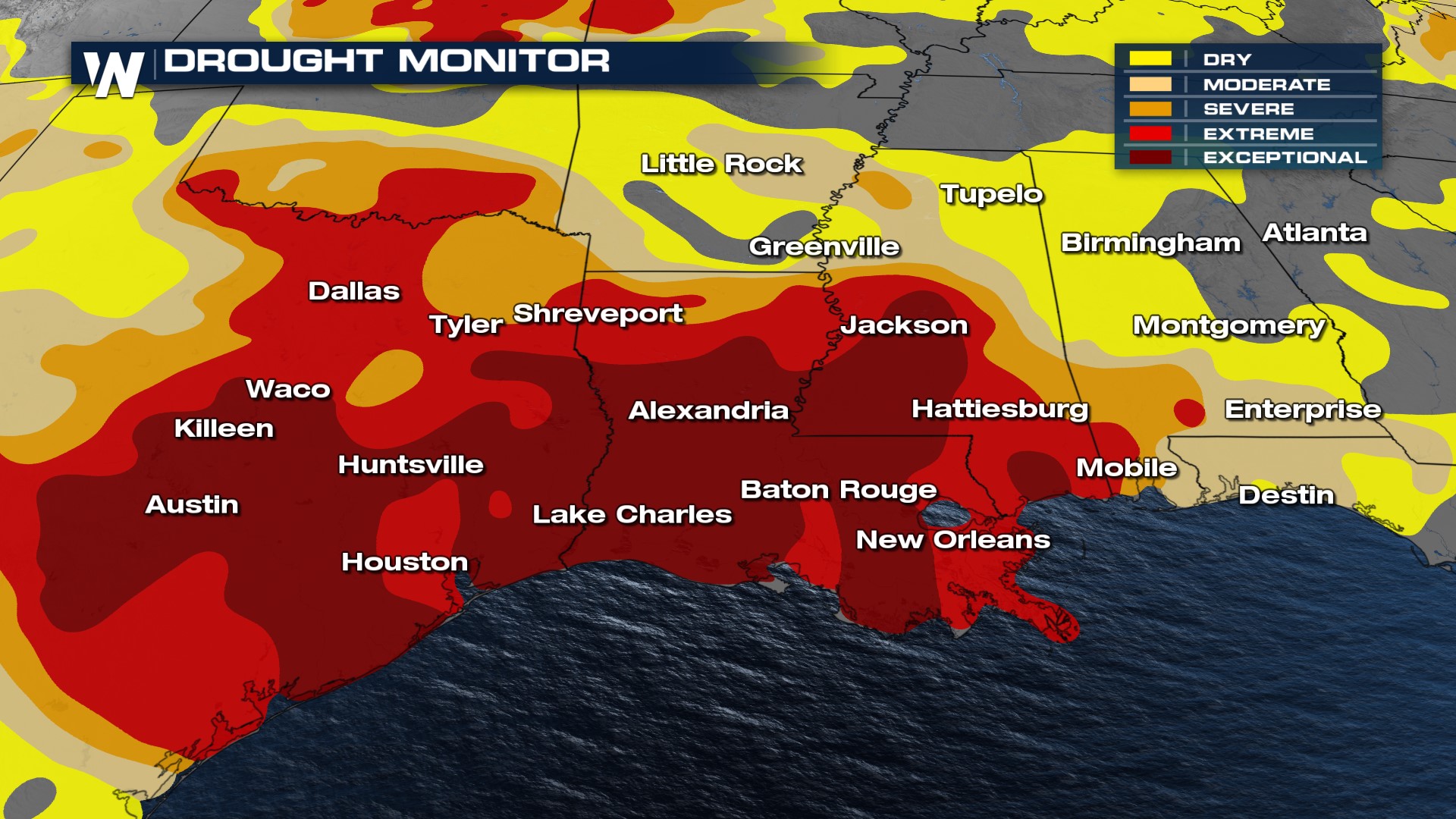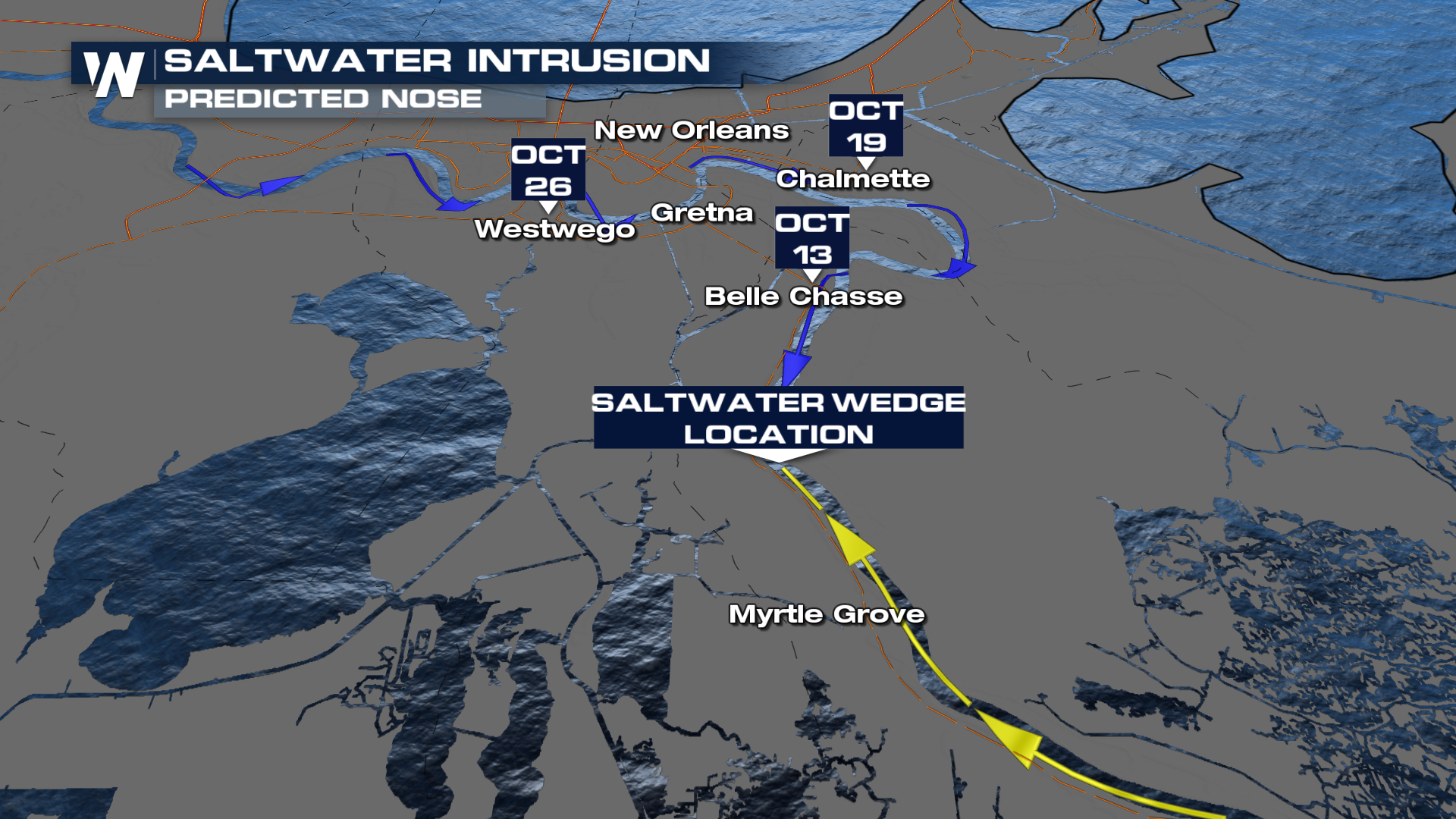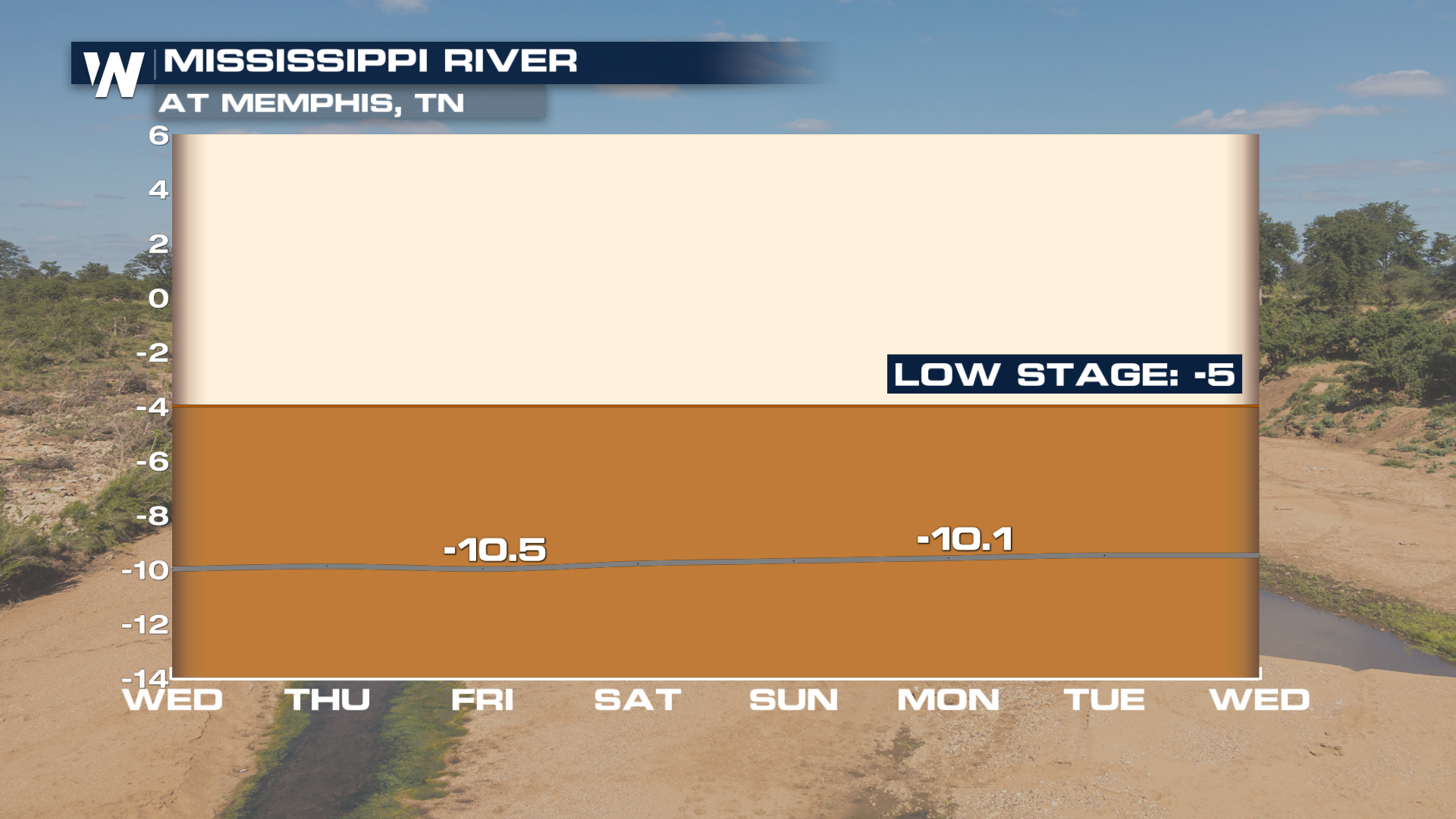Emergency Declaration Issued for Louisiana Due to Saltwater Intrusion
The southern tier of the country has been no stranger to a hot and dry summer, with extreme and exceptional drought conditions spreading from Texas into Louisiana and Mississippi. The drought aided in large fires in Texas and Louisiana this summer and now is impacting low water levels on the Mississippi River.
 As drought conditions persist, a new issue is impacting southern Louisiana, the saltwater intrusion. Because the mouth of the Mississippi river lies below sea-level is it normal for saltwater from the Gulf of Mexico to run back into the Mississippi. However, under normal conditions there is enough river flow coming downstream to combat serious salt-water progression north into the river. This year due to the drought and low water levels the saltwater is moving upriver, threatening water treatment plants for suburbs of New Orleans.
As drought conditions persist, a new issue is impacting southern Louisiana, the saltwater intrusion. Because the mouth of the Mississippi river lies below sea-level is it normal for saltwater from the Gulf of Mexico to run back into the Mississippi. However, under normal conditions there is enough river flow coming downstream to combat serious salt-water progression north into the river. This year due to the drought and low water levels the saltwater is moving upriver, threatening water treatment plants for suburbs of New Orleans.
On Wednesday, September 27th, a National Disaster assistance for the area was given, and according to FEMA, "to supplement state and local response efforts due to emergency conditions resulting from the seawater intrusion beginning Sept. 20, 2023, and continuing. [This] authorizes FEMA to coordinate all disaster relief efforts to alleviate the hardship and suffering caused by the emergency on the local population and to provide appropriate assistance for required emergency measures to save lives, protect property and public health and safety, and to lessen or avert the threat of a catastrophe in Jefferson, Orleans, Plaquemines and St. Bernard Parishes."
This has prompted the U.S. Army Corps of Engineer to increase an underwater sill to reduce the impact of the saltwater intrusion. According to the agency, "“As a result of continued falling conditions, this existing sill was overtopped and the toe of the saltwater wedge has reached River Mile 69, near the community of Jesuit Bend,” said Col. Cullen Jones, USACE New Orleans District commander. “Our modeling indicates that by augmenting the existing sill, we can support state and local preparedness and response efforts by delaying further upriver progression of the salt water by approximately 10 to 15 days.”"

Freshwater is also being transported in, according to USACE, "during previous low-water events, such as 1988 and 2012, barging was used to transport fresh water to treatment facilities downriver of the saltwater toe." This ensures that the treatment facilities aren't negatively impacted by processing saltwater instead of the normal fresh water, which could lead to corrosion or deterioration of the plants.
Part of the reason is that upstream precipitation also isn't coming through the Ohio River valley and mid-Mississippi River valley. In fact, we are below flood stage for the Mississippi River at Memphis. Our field correspondent Brandon Clement captured more images of low water levels in Mississippi and Tennessee on Thursday, September 28th showing the much below average waters.
 With no rainfall in sight, the saltwater intrusion and drought conditions will worsen further.
With no rainfall in sight, the saltwater intrusion and drought conditions will worsen further.